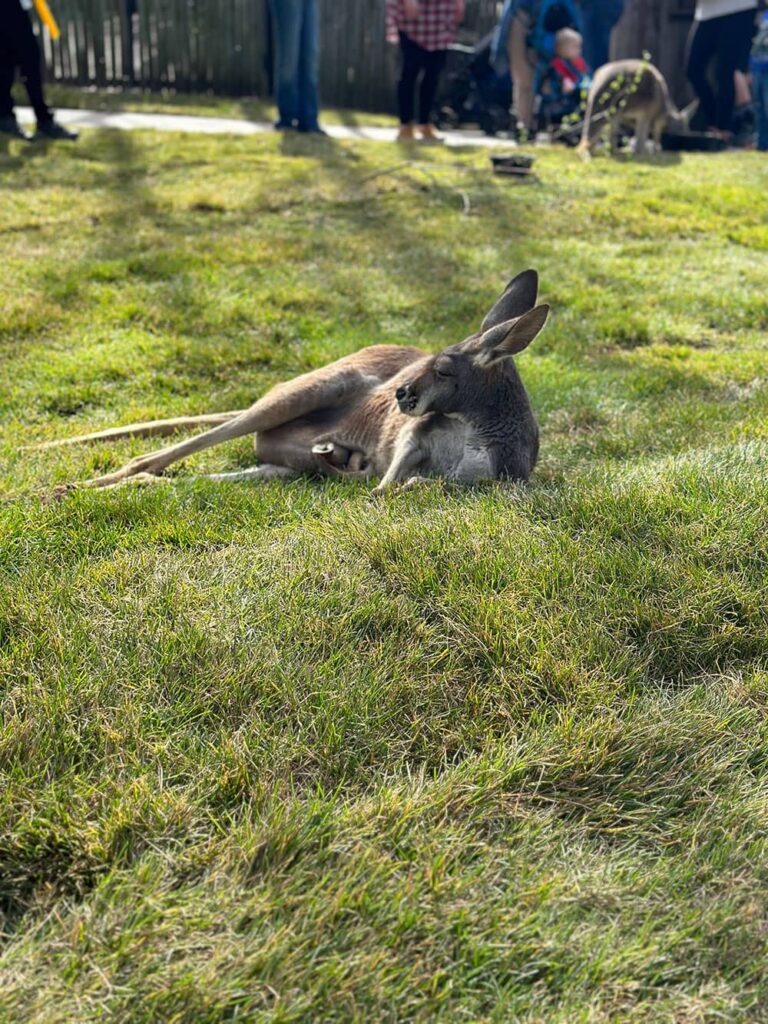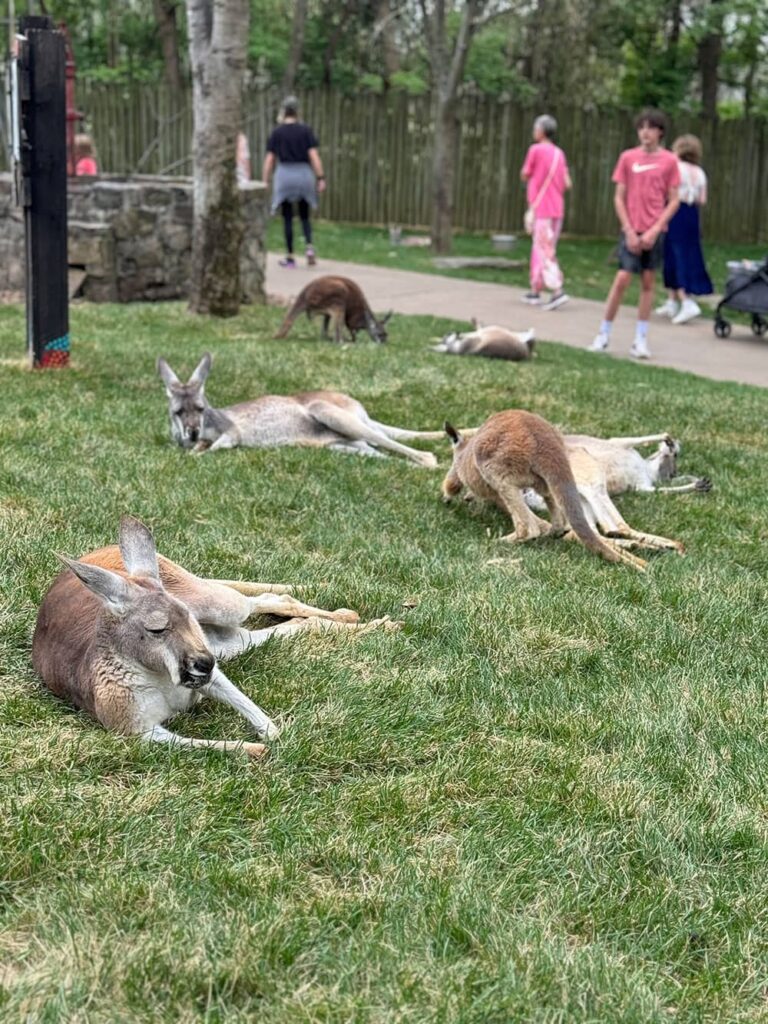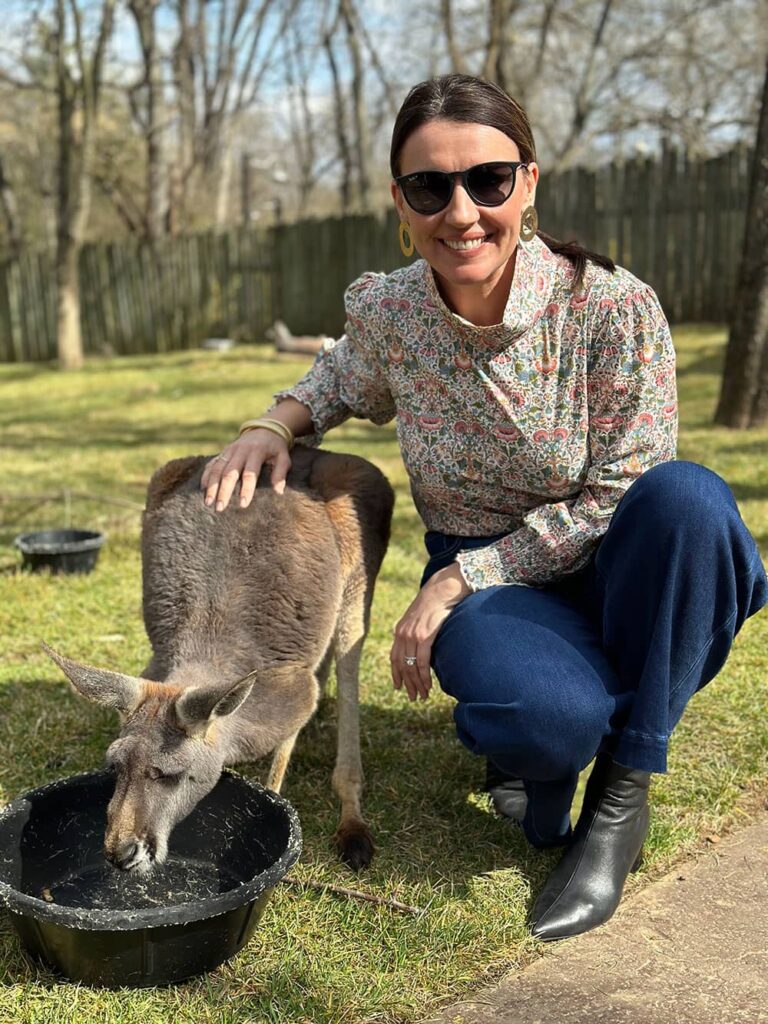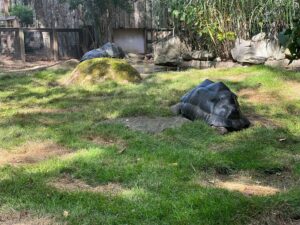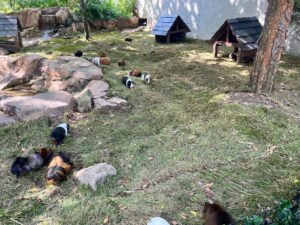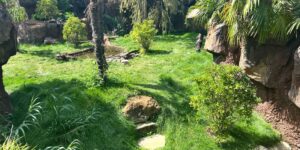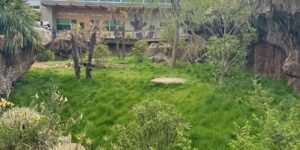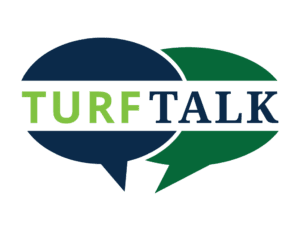
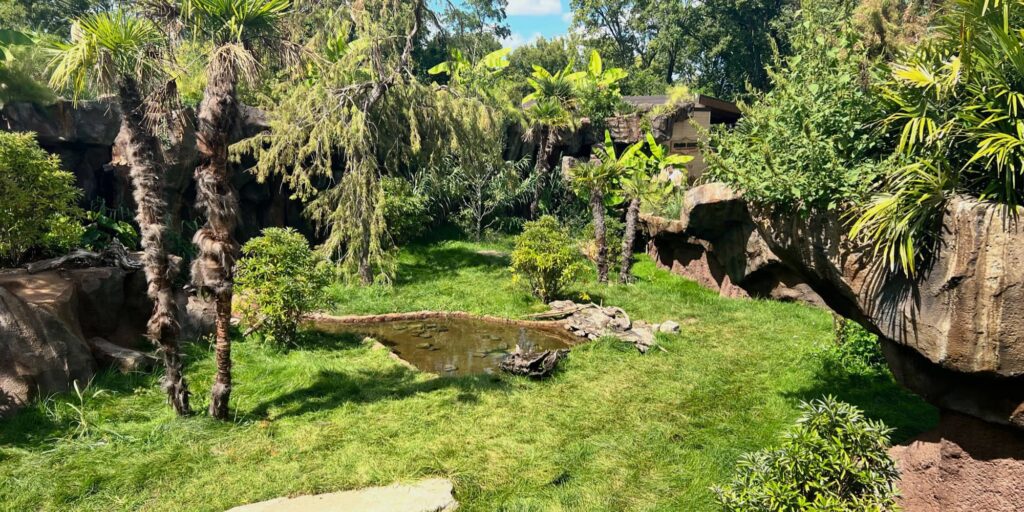
Nashville Zoo Transforms Habitats with Innovative Horticulture
Under the guidance of horticultural expert David Farrow, the Nashville Zoo has embarked on a transformative journey, reshaping its animal habitats to more closely mirror their natural environments. Leveraging over a decade of experience in zoo horticulture, Farrow has introduced innovative practices that blend aesthetics, animal comfort and environmental sustainability. Over the past two years, the zoo has installed approximately five full truckloads of HGT® Bluegrass from Tri-Turf Sod Farm, sourced by Sod Solutions Professionals. This specific choice of bluegrass, notable for its mesh-free property, is integral in preventing potential animal harm. These efforts enhance the well-being of the zoo’s diverse inhabitants and offer visitors more engaging and authentic experiences.
“It’s a really good bluegrass. It’s very hard to find meshless bluegrass on my own and not having the connections or sources that Sod Solutions Professionals has,” Farrow explained. A few years ago, the closest local supplier he could find was in Gary, IN making the cost of the sod delivery excessive.
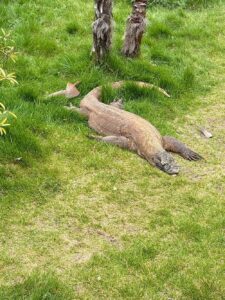
Komodo dragon on the bluegrass in its exhibit at the Nashville Zoo in April 2024.
“Another key thing for us is having a source that can give us mesh-free bluegrass is because endophytes can harbor in some grasses like rye and fescue, but it doesn’t harbor on bluegrass. That fungus can actually cause bovine and equine animals to have miscarriages and being a zoo, babies are huge for us because we’re trying to save the species. When we can minimize that risk in their yard and to have a source that we can get bluegrass readily from is a significant advantage. Otherwise, we’d have to grow it from seed.”
Since 2022, the zoo has installed bluegrass sod in various exhibits, enhancing the habitats for a wide variety of animals including kangaroos, guinea pigs and Komodo dragons. Farrow noted the sod not only improves the aesthetic appeal of the exhibits for visitors but also contributes to the animals’ well-being, offering them a softer surface than hard ground. Additionally, it plays a crucial role in managing erosion and preventing the exhibits from turning into mud pits, maintaining a cleaner and more natural environment.
One of Farrow’s passions for his job is designing the horticultural elements for new exhibits alongside the zoo’s CEO, Rick Schwartz. “The kangaroo exhibit was actually my first project here in 2013. The way we did the sod back then was I was making multiple trips to a local nursery to get the sod and then seeding over top of it. It’s come a long way in 11 years.”
A unique thing about Nashville Zoo is that it has had grass in its giraffe yard since 2008. Farrow explained that due to their weight, large hooves and how much they move around, most zoos have standard crushed material in their yards. Because of their good agronomy plan, they’re able to keep sod alive in this area and are considering putting more in the entire exhibit area. They’ve also seeded the rhino exhibit and are considering laying sod and overseeding it for the second part of the renovation. “That’s another animal, aside from the San Diego Zoo Wildlife Park, you don’t get a lot of rhino exhibits that have grass due to their wear and tear from how heavy they are. But we’re going to try it,” Farrow said.
Farrow said following a sod installation, you can almost immediately see a difference in the animal’s behavior, particularly when they get brand new sod installed in the spring. “When the weather’s beautiful and perfect for them, they kind of just lounge around all day. It’s definitely great for the kangaroos but also for the people because the public wants to see every animal as close as possible and those animals just lay out on the grass and don’t move, they love it.”
Currently, Farrow has been installing new sod for exhibits bi-annually for the kangaroos because they’re tougher on the grass especially if after warm summer months the grass dries up and they put more wear on it. Farrow installs new sod for the guinea pigs and other animals on a more regular basis when a few pallets are delivered on a monthly basis. Farrow said like most zoological horticulturists, he follows the famous words of Dr. Doug Tallamy that every living thing eats plants or eats something that eats plants when maintaining and designing exhibits. “We try to display the symbiosis or connection between the plants and the animals. When we’re planting things, we try to find plants with dual purpose. An example would be when we plant a redbud tree we know that when we trim it we can use that material to feed giraffes or tapirs that love it and not just take it to a wood dump.”
They also work hard to select plants that mimic themed ecosystems for these animals. For example, in the Komodo Dragon exhibit, Farrow tries to find plants that resemble the Indonesian flora, where these reptiles are from. He explained that the exhibit looks amazing because they don’t mow the grass inside much, so it’s lush and long.
Farrow praised the Sod Solutions Professionals team for having the bluegrass delivered when they needed to upgrade an exhibit. He said they’ve always been reliable, from full truckloads to single pallet drops depending on their needs. He said they’ve also immediately resolved minimal hiccups related to drop-off locations or times. Having to maintain plants across 188 acres on the zoo grounds, Farrow said being able to count on them has been fantastic. “I can call them pretty much any time during the work day and they answer and get right back to me. I know they’re in South Carolina but it’s like they’re one of my local reps.”
Director of Sod Solutions Professionals, Christopher Buechele feels mutual about their experiences working with the Nashville Zoo, noting it’s been fulfilling and demonstrated the essential role of providing quality grass for zoo animal habitats.
“Attending the Association of Zoological Horticulture Annual Conference last fall, I was able to see firsthand the hard work that David and his team have put into all of the exhibits.”
“Their attention to detail and the manner in which they care and treat the animals is exceptional. Being able to be part of the process of working alongside David to troubleshoot historic sod problem areas within the enclosures has been fun and presented different types of questions that the team does not traditionally answer. Typically, we deal with golfers, soccer and football players, considering the needs of a 2-ton rhino and lounge areas for kangaroos and Komodo dragons presented fun hurdles.”
Buechele emphasized the value of the partnership with the zoo, noting its positive impact on his team. “This collaboration has enriched us, offering invaluable insights that drive our mission forward. We’re eager to forge similar partnerships nationwide, aiming to elevate animal habitats and visitor experiences through the strategic use of sod.”
To learn how Sod Solutions Professionals can source turfgrass for your next project and help it run seamlessly, click here.
This article was written by Cecilia Johnson.

